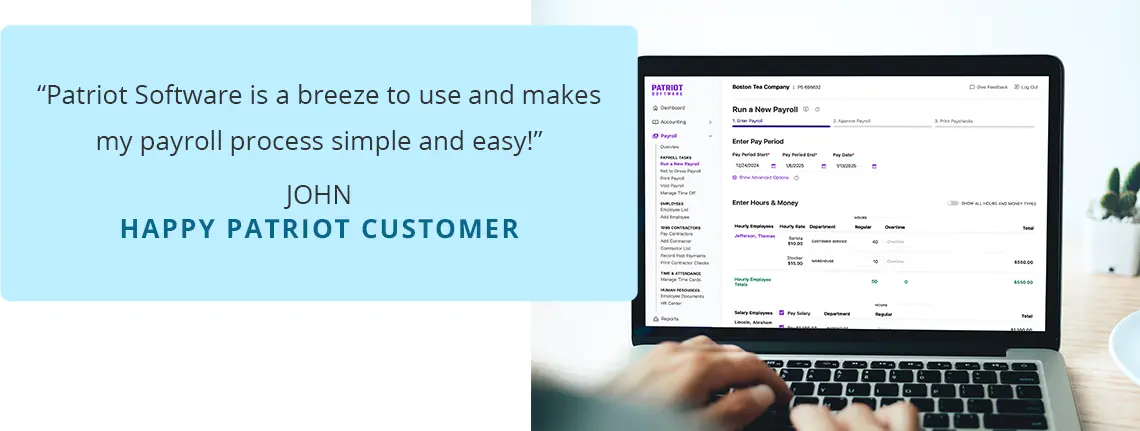Benefits matter to 81% of employees, which means your benefits package is an important recruitment and retention tool. From traditional benefits, like health insurance, to newer benefits, like student loan repayment, you’re always looking for the next best thing. Have you heard of employee assistance program (EAP) benefits? What is EAP, exactly?
Just over half (51%) of employees at private sector businesses enjoy EAP benefits, which include a range of financial, support, and care services.
Before you implement an employee assistance program, understand the basics. What services are included in an EAP? What are the benefits for employers and employees? Are EAPS subject to payroll taxes? Read on for the scoop.
What is EAP?
Employee assistance programs aren’t anything new. They date back to the 1930s, originating as a program to help employees with occupational alcoholism. Since then, EAPs have expanded to offer employees support in other areas, like mental health and occupational issues.
Today, an employee assistance program is an employer-sponsored benefit that provides free and confidential assessments, short-term counseling, referrals, and follow-up services. Examples of EAP services include caregiver support, family counseling, and financial assistance.
EAP benefits aim to help employees with personal or work-related problems that can impact productivity. There is no cost to employees. Employees can obtain services via phone, video, chat, email, or in-person visits.
Employers typically work with third-party providers, like health insurance companies, to provide EAP benefits to employees. You might work with a standalone EAP provider or an all-in-one provider who offers a comprehensive health insurance plan and EAP services. Keep in mind that EAPs that offer health care services, such as mental health counseling, are regulated under ERISA and therefore subject to COBRA continuation health coverage.
What services are included in an EAP?
EAPs include a range of services to support employees facing personal or work-related problems.
Your employees may be able to seek assessments, counseling, or referrals for:
- Counseling: Employees can seek counseling services to help with mental health issues (e.g., anxiety or depression), family issues (e.g., marital problems), work, or substance abuse issues. Some EAPs provide counseling directly while others only offer referrals.
- Work-life balance support: Employees can seek support and referrals for childcare, eldercare, and similar care.
- Financial assistance: Employees can seek guidance and referrals for managing debts, budgeting, and financial planning.
- Legal assistance: Employees can seek legal guidance and referrals for divorce, custody, wills, or other personal legal matters.
Providers vary. Consult possible employee assistance program providers to learn more about included services.
Benefits of employee assistance programs
Personal and work issues can impact an employee’s job performance and productivity. Not to mention, benefits are a critical recruitment and retention tool. As a result, EAPs benefit employers and employees.
| EAP Benefits for Employees | EAP Benefits for Employers |
|---|---|
| Better work-life balance | Boost in productivity |
| Increased job satisfaction and engagement | Reduced absenteeism |
| Improved mental health | Increased retention |
| Access to support and referrals | Decreased healthcare costs |
Despite the benefits, EAPs typically have low utilization rates by employees. Weigh the possible benefits against the cost of offering an EAP to determine if you want to include it in your employee benefits package.
Are employee assistance programs taxable?
Employee compensation is subject to employment taxes. But what about an EAP—is this type of benefit subject to federal income tax withholding, FICA tax, and FUTA tax?
In April 2024, the IRS released guidance in the form of FAQs on whether work-life referral (WLR) services are subject to taxes. WLR programs are typically part of an EAP. The IRS did not address other services offered through an EAP.
WLR services are also called caregiver or caretaker navigation services. Work-life referral programs provide guidance, support, information, and referrals for work-life challenges.
According to the IRS, employees can use WLR services to help them:
- Identify education, care, and medical service providers
- Choose a child or dependent care program
- Determine eligibility for government benefits (e.g., VA benefits)
- Evaluate and use paid leave programs
- Locate home services professionals who specialize in adapting a home for a family member with special care needs
- Navigate the medical system
- Connect them with local retirement and financial planning professionals
For example, WLR services could help an employee looking for childcare center providers with paperwork and basic administrative tasks.
According to the IRS, you can exclude the value of work-life referral services from gross income and employment taxes.
WLR services are treated as de minimis fringe benefits. De minimis fringe benefits are so small and infrequent that accounting for it would be unreasonable. As a result, the IRS excludes de minimis fringe benefits from gross income and does not subject them to federal employment taxes.
But there is a word of caution from the IRS. The IRS states that:
“Because these FAQs have not been published in the Internal Revenue Bulletin, they will not be relied on or used by the IRS to resolve a case. Similarly, if an FAQ turns out to be an inaccurate statement of the law as applied to a particular taxpayer’s case, the law will control the taxpayer’s tax liability.
Nonetheless, a taxpayer who reasonably and in good faith relies on these FAQs will not be subject to a penalty that provides a reasonable cause standard for relief, including a negligence penalty or other accuracy-related penalty, to the extent that reliance results in an underpayment of tax. Any later updates or modifications to these FAQs will be dated to enable taxpayers to confirm the date on which any changes to the FAQs were made.”
Check out the IRS’s FAQs for more information.
How to implement an EAP
Interested in adding an employee assistance program to your benefits package? Here are a few tips to help you get started with this HR process.
Determine what your employees need. Conduct an assessment to find out what types of services your team wants. You can gather feedback from employees through benefits surveys.
Choose a provider. Determine if you want a standalone EAP, or if you want a provider who offers both EAPs and health insurance plans. EAP providers include Anthem and Cigna.
Communicate the benefit to employees. Encourage your employees to take advantage of their EAP benefits. Let your team know about the new benefit by including it in your employee handbook, sending out emails, etc.
When it comes to payroll taxes, leave the hard stuff to Patriot Software. Sign up for our online payroll and say goodbye to calculating taxes! Get started with a free trial.
This is not intended as legal advice; for more information, please click here.



